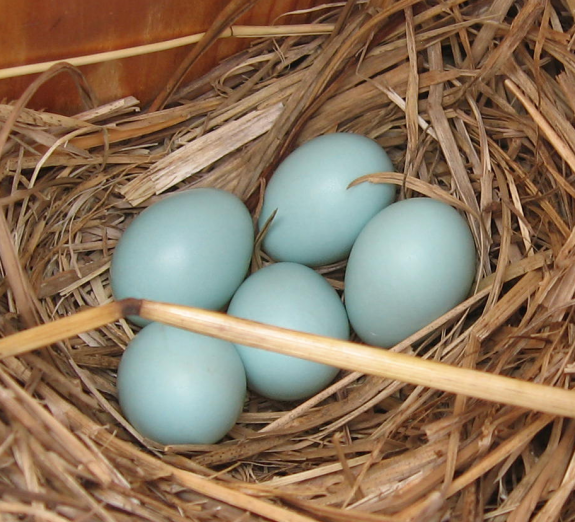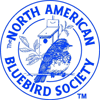Want to host nesting Bluebirds? If you’re seeing Bluebirds in your neighborhood, get The Backyard Naturalist’s best (always free!) advice on attracting and supporting a Bluebird family in your backyard. Here are some answers to frequently asked questions and some simple tips.
Bluebird nesting season
When do Bluebirds nest?
Eastern Bluebirds begin defining and defending their nesting territories earlier than other species — generally, starting the end of February, early March.
Watch (and listen) for Male Bluebirds, alone on a high branch singing to attract a mate. Some Bluebirds, paired with last year’s mate, may also be getting a quicker start!
Where do Bluebirds nest?
Although the actual egg laying and incubation cycle begins later in the spring, clean, Sparrow-resistant nesting boxes should be up now!!! If chosen, your nest box will provide shelter for the prospective parents from predators and early spring’s unpredictable weather in the meantime.
Bluebirds: Shelter and Nesting Requirements
What convinces Bluebirds to choose one particular nesting site or box from another?
Bluebirds’ requirements for nesting include:
- Safe, Private Shelter – A clean, Sparrow-resistant nest box placed away from feeding stations.
- Boxes should face open spaces, the edge of woods is ok.
- Abundant Food – Please do not use pesticides and deprive Bluebirds of their natural food source-insects. You can provide mealworms (live or freeze-dried) are an extra enticement.
- Fresh Water – A clean, unfrozen and consistent water source
Choosing and securing a Bluebird nest box
Why should Bluebird boxes be Sparrow-Resistant?
Eastern Bluebirds have a deadly nemesis: English House Sparrows. This non-native, predatory species is a nesting Bluebird’s worst nightmare. House Sparrows will invade and evict occupants of a nest box, if they can gain access. They will kill the mother bluebird when she absolutely refuses to abandon her eggs or nestlings, then immediately build their own nest on top of her warm body.
House Sparrows are a serious threat to Bluebirds’ survival and nesting success.
How do we keep House Sparrows from taking over our nest boxes?
Fortunately, there are ways you can help protect your tenant Bluebirds and thwart trespassing House Sparrows. Although starting with the right nest box is absolutely key, you’ll also need to follow up with active monitoring.
IMPORTANT: Routinely and frequently monitor nest boxes for House Sparrows and any of their attempts to take over. We can’t emphasize this point enough!!!! Please see our resource “House Sparrows: Deadly Foreign Invaders” for strategies to deter or remove them.
Buying a Bluebird nest box
Which nest boxes do you most recommend?
In our experience, we recommend these as being most effective:
Slot Boxes or the Gilbertson Nest Box
Maintaining Bluebird nest boxes
How do I get my nest box ready for Bluebirds?
As a good backyard bird host, you already know, you need to start with a clean box and always clear between broods, as well as after the last one of the season. If you haven’t already, go do it NOW!!! Bluebirds normally have 2-3 broods each season, so you’ll need to clear out the whole nest after each brood fledges.
Remember, as a bonus for your efforts, a clean box will encourage re-nesting in the same location! Watch for increased activity and lots of chirping, then sudden quiet! That’s a good indication that the fledglings have left home and you need to get ready for the next brood.
Also, as a bonus for the birds, your clean nest box will be available for shelter from winter weather.
Cleaning a Bluebird nest box
Clear out all the nesting debris. Sometimes it might be grungy and you’ll want to scrub out the interior with warm, soapy water and rinse well.
A clean nest box makes Mama Bluebird happy and will also help increase the lifespan of your box.
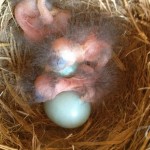
Placing Bluebird next boxes in your yard
How and where should we place our Bluebird nest box?
Position the boxes in open areas, preferably a hundred yards apart. If placing new boxes, be sure they face the openness of a yard, meadow or field. The edge of woods is ok, too.
Mount the boxes on poles with snake baffles. Even if you don’t see snakes in your yard, they are more common than you think and love plump little nestlings for dinner. This will definitely optimize the number of healthy fledglings you facilitate. Don’t underestimate this detail.
About Bluebirds & Food – Quality Protein
What kind of food do we provide to tempt Bluebirds?
Bluebirds aren’t considered traditional backyard feeding birds, as they are mainly insect eaters, but you could offer them mealworms and some other high protein nourishment, like sunflower chips, peanut pieces, Bluebird suet nuggets as an added incentive.
If they don’t visit our feeders, is there something else we can do?
The best thing you can do, is to never use pesticides and allow Bluebirds’ native insect food source to flourish. As natural feeding habitats are diminished, Bluebirds are adapting to new food sources. Although Bluebirds are not traditional wild bird seed eaters, reports are in that there’s a definite increase in their appearance at backyard feeders.
An abundance of desirable food can be an added incentive for them to visit your feeders and ultimately choose your yard during nesting season!
About Bluebirds & Water – Fresh and Unfrozen
Will we see Bluebirds at our bird baths?
In any season, a bird bath can lure Bluebirds into your backyard. In winter, keep the water ice-free with a de-icer or heated bath. If there are Bluebirds in your neighborhood, when all natural water sources are frozen, your ice-free bird bath will be very attractive!
Check out the inspiring photo below taken by Jenny Hendershot, member of the Maryland Bluebird Society, of bluebirds sharing the birdbath at her home in Washington County.
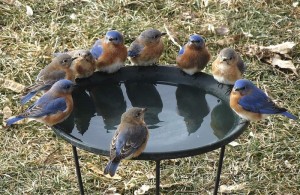
Eastern Bluebirds & Resurgence in Maryland
I’m not seeing Bluebirds in my area, are Bluebirds endangered?
They were previously in serious decline, but there has been a resurgence in the Eastern Bluebird population thanks to conservation efforts and backyard nesting boxes. In fact, Eastern Bluebird conservation began in Maryland!
Dr. Lawrence Zeleny founded the North American Bluebird Society, right here in Montgomery County. Since 1978, this national group has promoted the preservation of Bluebirds. They educate, persuade, and enlighten the public in methods that we ALL can use to help bluebirds. Please support their ongoing research and education efforts with your membership.
Join with other Bluebird fans in Maryland, by joining the Maryland Bluebird Society. All membership dues and donations go directly to promote Bluebird Conservation in our area… and it’s tax deductible. The Backyard Naturalist is a corporate sponsor and we can’t emphasize enough… Join!!
Do You Have More Questions about Bluebirds?
Just ask us! We are here if you need us. The staff at The Backyard Naturalist are always happy to answer any questions to help enhance your Bluebird experience. We’ve been Bluebird Mentors in Montgomery County for 30 years. Stop in and see us!
Recommended Books About Bluebirds
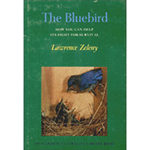
The Bluebird: How You Can Help Its Fight for Survival by Dr. Lawrence Zeleny
This is the book that inspired a nationwide conservation effort. Originally published by Indiana University Press in 1976, it is now out of print, but secondhand paperbacks are readily available online.
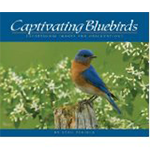
Captivating Bluebirds by Stan Tekiela
Page upon page of stunning photographs! Stan Tekiela’s concise, informative and entertaining writing make ‘Captivating Bluebirds’ a truly lovely and information-filled addition to any library. The title is very accurate!! Birders and non-birders alike will be captivated by Stan Tekiela’s photos.
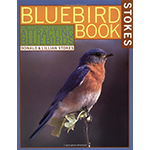
The Bluebird Book: The Complete Guide to Attracting Bluebirds by Lillian & Donald Stokes
This is a must-have book for beginning birders or anyone who is fascinated with Bluebirds. Beautifully illustrated with lots of great information to inspire, get you started, then guide you on your way to hosting Bluebirds in your own backyard!
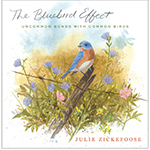
The Bluebird Effect by Julie Zickefoose
There is much good news about Bluebirds and their resurgence. We agree with Julie Zickefoose in her phenomenal book, The Bluebird Effect: Uncommon Bonds with Common Birds. She writes, “When the long term decline of bluebirds became evident in the 1960’s, the nationwide move to provide housing for them was the largest single-species conservation effort ever launched.” ( This is a truly gorgeous book… If you haven’t discovered Julie’s work, based on forty years of keen observation and study, you are in for a treat!)
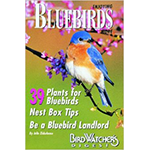
Enjoying Bluebirds More: A Special Publication from Bird Watcher’s Digest by Julie Zickefoose
Julie packs a lot of information in here! She explains Bluebird habit, behavior, food preferences and much more! She describes her experiences with Bluebirds in a way that’s both sensitive and inspiring! There are also detailed explanations of Bluebird House Trails and Bluebird Nesting Boxes.
Find out more about creating a haven for wild birds in your backyard:

